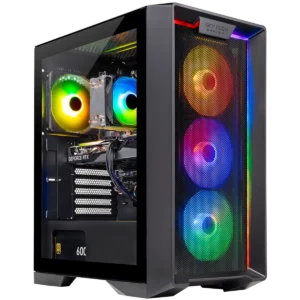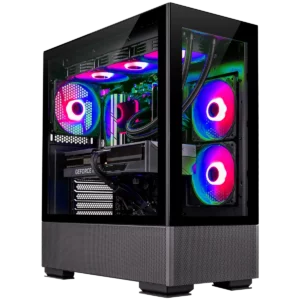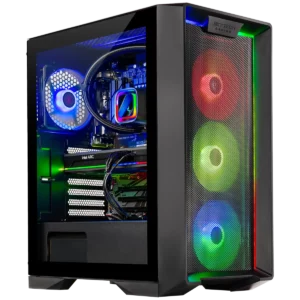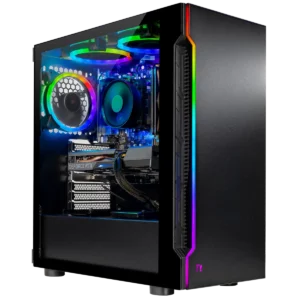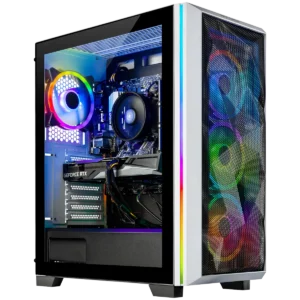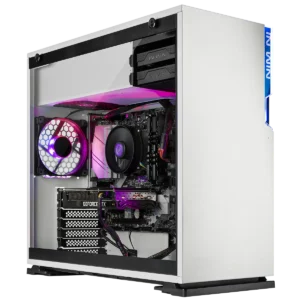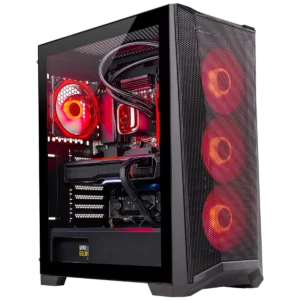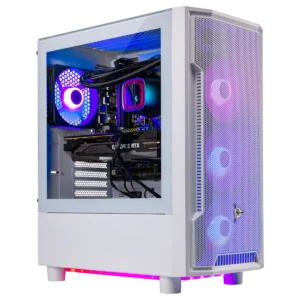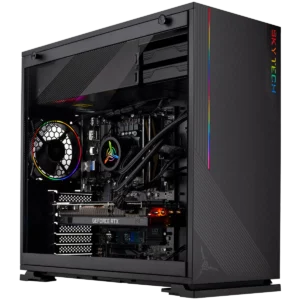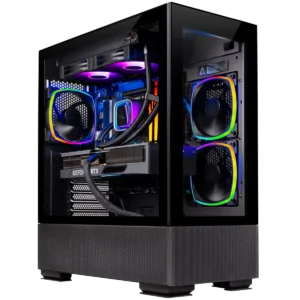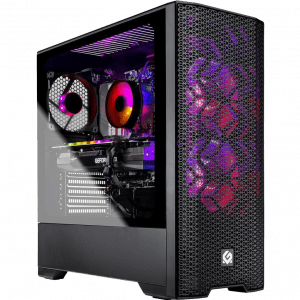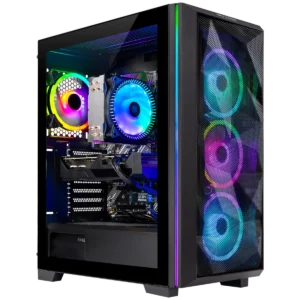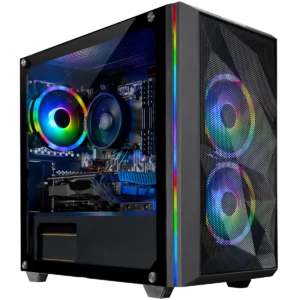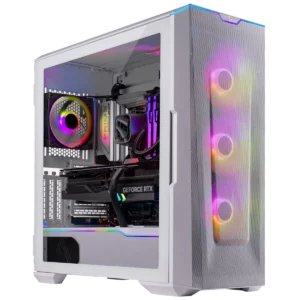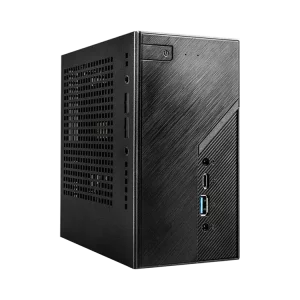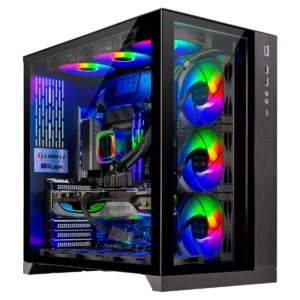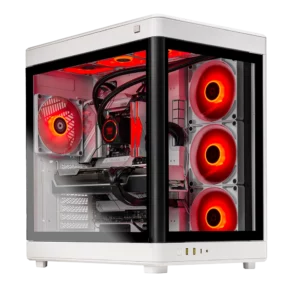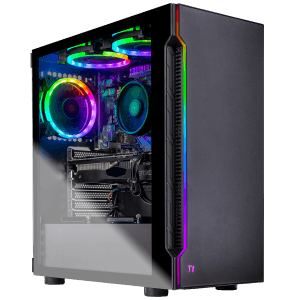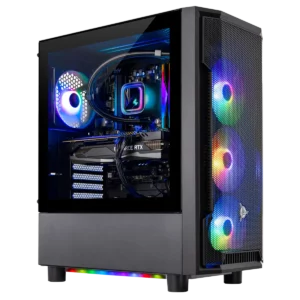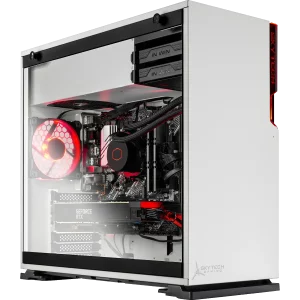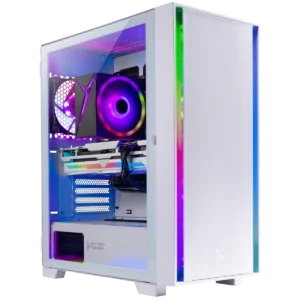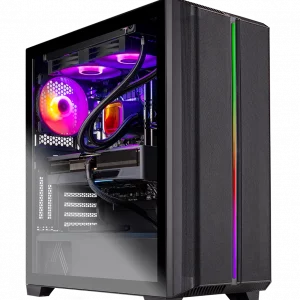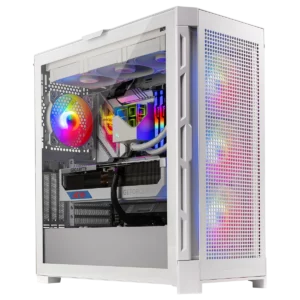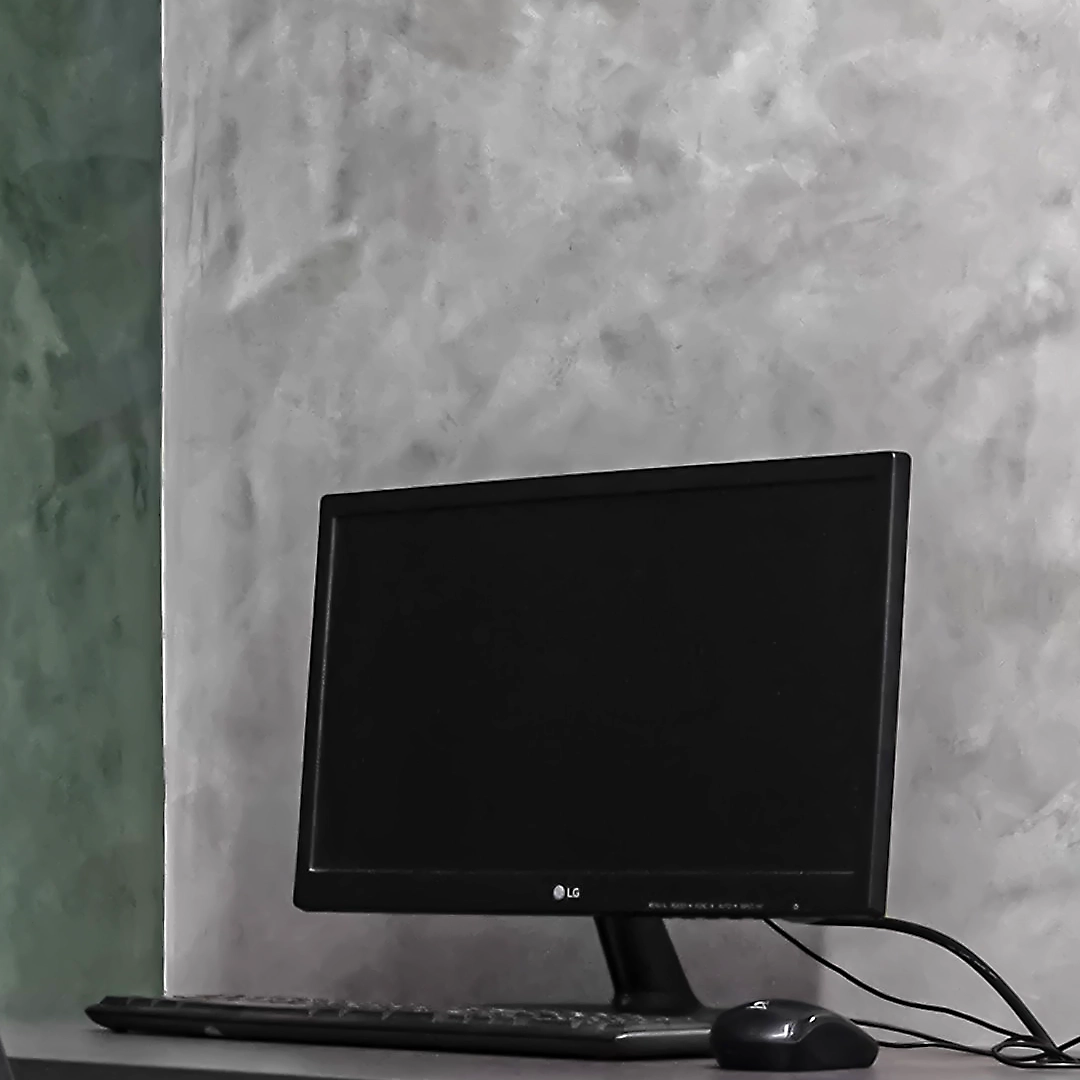What to Do When Your PC Won’t Display to Your Monitor: 7 Troubleshooting Processes to Try
Whether it’s a new rig or a sudden change in your old one, when your PC won’t display to your monitor it can be a frustrating experience. Learn some troubleshooting processes that may help you get your display back!
Featured image courtesy of Soulkid Photography via Pexels.
It may seem like there’s nothing you can do when your PC won’t display, but that’s not necessarily the case. There are many things that can cause a PC not to display, and some are relatively easy to fix. We’ll order these from the simple steps worth getting out of the way, to the more complex troubleshooting processes, and also add videos to help provide additional guidance.
Is your monitor on and configured correctly?
- Make sure the monitor is plugged in and powered on.
- If it’s powered on, there should be a light on or near the power button and you may get an error message such as “No Signal”.
- Check that the input source on your monitor is set to the same input connection as the cable you’re using (HDMI, DVI-D, or Displayport). Most monitors have a button that allows you to choose between your monitor’s different input options.
- You may need to refer to your monitor’s manual to find out which button will change your device input source. Searching the monitor’s model online will likely help you find its manual.
These are some of the most obvious and easiest steps, and while some people are tempted to skip these instead of checking them, we think it’s definitely worth a few minutes to rule these out as the source of the issue. Nowadays, many monitors will automatically detect the correct one, but it’s simple and easy to double check this to rule it out.
Is your display cable plugged into the correct ports?
Confirm that the display cable (your HDMI or DisplayPort cable) is plugged into the monitor output port, not the input port if any. Some monitors will be able to send a display to another device, but that same port will not be able to receive a display from the computer.
Also, make sure you are plugging your display cable into the correct port on your PC. Which place you’ll need to look for these ports will vary depending on whether your PC uses a graphics card, or only relies on graphics processing integrated into its CPU. Most gaming PCs will have a graphics card installed, but some budget models will use CPU integrated graphics processing instead.
If your PC has a graphics card, you’ll want to plug your display output cable into one of the display output ports coming from this card, not your motherboard. A graphics card is long and rectangular, and will typically be mounted horizontally relative to how your PC stands, though they can also be mounted vertically in some builds. The ports will be around the middle of the chassis. The card will connect to the rest of your PC internally via a PCIe slot on your motherboard for information processing and may have its own power cables coming from your PC’s power supply unit (this is typically the case in modern gaming PCs).
Here’s a picture to demonstrate where the display output ports will typically be located on a gaming PC that has a graphics card installed.
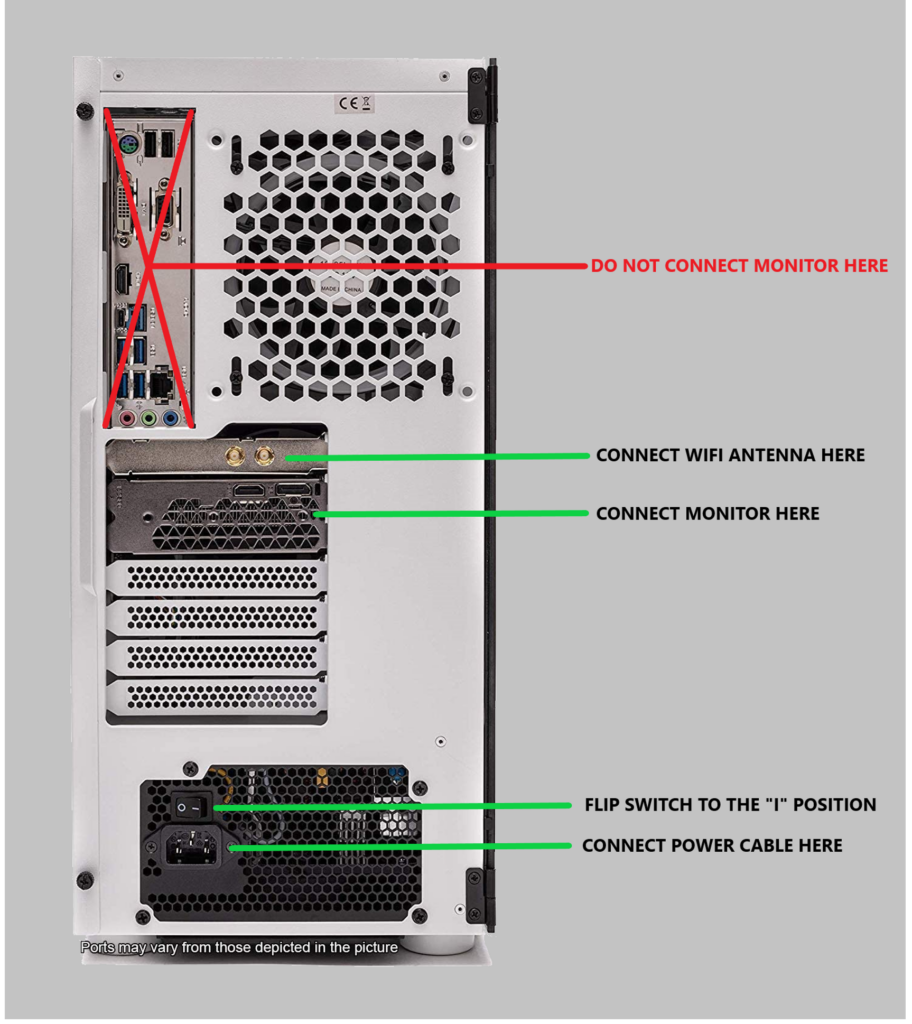
Here’s a video made by our staff about how to troubleshoot when your PC won’t display, the first section of which covers ensuring your display cable is plugged into the correct port on your PC.
Check that your display output cable is working.
Sometimes, the problem when your PC won’t display can be as simple as a display cable that has failed. It’s worth making sure your display cable itself isn’t the source of the problem. Check your display output cable for damage. Whether you notice any damage or not, try using a different DisplayPort or HDMI output cable for your PC’s display output cable. It’s best if the cable you use for this step is one you know works with other devices.
Test monitor with another console or device that can output video.
In some cases, an unexpected monitor issue can be the culprit when your PC won’t display instead of an issue with the cable or the PC. It’s worth testing your monitor with a difference device that you know works and can provide display, just to rule this out and make sure your monitor is working properly.
Test if your PC is passing POST.
This step is a quick test that can tell you more about the issue.
- After your PC has been on for about 10 seconds and is not displaying, try pressing the power button rapidly, and continue pressing the button rapidly for about 30 seconds.
- Did it turn off, or turn off and on again due to these button presses? If it did respond this way, the PC should be otherwise functioning okay, and the issue causing it to not display lies between the graphics card and the monitor.
- If the PC did not respond, hold down the power button. Does pressing and holding the power button turn off the PC? If the PC responds to the long press, but not the rapid presses, that means the PC is not passing its Power-On Self Test (POST). The CPU and motherboard should be okay, and the issue may be with another component (likely RAM).
Write down your results for reference.
Our next troubleshooting processes involve reseating some internal components that can commonly cause your PC be to unable to display when they are not seated quite correctly. Components can need to be reseated due to the bumps of shipping, or moving a PC from place to place. Choose the process recommended for your POST results first, but there’s no harm in trying both.
After you finish attempting troubleshooting processes that involve reseating internal components of your PC, if your PC won’t display still, you may want to perform another POST test to confirm the results haven’t changed. Write them down again.
If you have a Skytech Gaming PC, and you need to contact our customer support team, telling the agent you’re working with the results of your POST test will be helpful.
If your PC is not passing POST: Reseat your PC’s RAM
Make sure that the PC is turned off, your PSU is switched from “I” to “O” so that no power is coming from it to your machine, and then unplugged. Now you can try the following steps to reseat your PC’s RAM:
- Open the glass or metal side panel so that you can see your PC’s RAM sticks in your PC’s motherboard. To the right of the CPU cooler, there should be one or more vertical sticks. These sticks are the RAM modules.
- Check to see if there are locking tabs on the top or bottom of the slot that a RAM module is inserted in.
- Press down on the top and bottom locking tabs for the slot (if applicable) to release the module.
- Take the module out of the slot.
- Then, insert the module back into the slot, one side at a time. We find that it is easiest to slide the module in the bottom of the slot first. Make sure the center notches align correctly before pressing in, and that the locking tabs on the top and bottom (if available) snap into place after pressing in.
- Press against the bottom with your thumb firmly but carefully until you hear it snap into place, and then press against the top of the module until it also snaps into place.
- Whether you have one or two locking tabs, you still should hear 2 clicks when inserting the module into the slot, one for each side.
- Now you can close your PC up and test to see if your PC will display.
Here’s a video made by our staff about how to troubleshoot when your PC won’t display, set to start at the section that covers reseating your RAM:
If your PC is passing POST: Reseat your PC’s Graphics Card
Make sure that the PC is turned off, your PSU is switched from “I” to “O” so that no power is coming from it to your machine, and then unplugged. Now you can try the following steps to reseat your PC’s graphics card:
- First check the back of your case and see if there is either a sliding bracket with 2 screws, or a single hinged bracket with 1 screw.
- If you see a bracket, you will need to loosen that screw and move the bracket in order to expose the graphics card screws.
- After you have moved the bracket, or if your case does not have a bracket on the back, open the side panel (usually glass but can be metal) to allow you to see your graphics card.
- Remove the PCIe power cable(s) for your graphics card.
- There should be a clip on the slot and the plug itself.
- When removing the plug, press on and hold down the clip on the plug continuously.
- Remove the screw(s) mounting the graphics card onto the bracket on the left side with a Phillips-head screwdriver.
- Press the plastic tab on the right side of the motherboard slot that the graphics card is inserted in to release the card, with your finger or carefully with the screwdriver tip.
- Once the card is released, slowly and gently rock it back and forth horizontally towards yourself to remove it.
- Reinsert the graphics card, making sure it is firmly secured. You should hear or see the plastic tab lock back into place.
- Reinsert the screws and close the bracket if necessary.
- Plug your graphics card PCIe power cable(s) back in.
- Confirm that the clips on the plug and header are lined up before reinserting the plug into the header.
- You do not need to press the clip on the plug while reinserting the plug.
- Now you can close your PC up and test to see if your PC will display.
Here’s a video made by our staff about how to troubleshoot when your PC won’t display, set to start at the section that covers reseating your graphics card:
If after these steps, your PC won’t display still:
At this point, if the issue is still not resolved and your PC is a Skytech Gaming PC, we recommend contacting our customer support team for help. When you contact them, please let them know what the results of your POST test were. This will help them do their best to help you better.
If your PC is not a Skytech Gaming PC, and your PC won’t display still, you may need to contact any relevant warranty services that you know you have that cover your product.
If you built it yourself or do not have a warranty, and your PC won’t display still, you may want to begin considering that some of your PC’s components may need to be replaced. In some cases this could be the graphics card or the RAM.
We wish you the best of luck in your troubleshooting!
About Skytech Gaming
Skytech Gaming is a system integrator that builds prebuilt and custom PCs for both gaming and creative work. We aim to offer the best experience and performance at every budget, from low-cost entry level machines to the latest bleeding edge, high-end showcase PCs.
If you would like more information about our PCs please contact Skytech Gaming’s customer support team at (888)370-8882 or [email protected]. Our agents will be happy to do their best to help as soon as they can!
